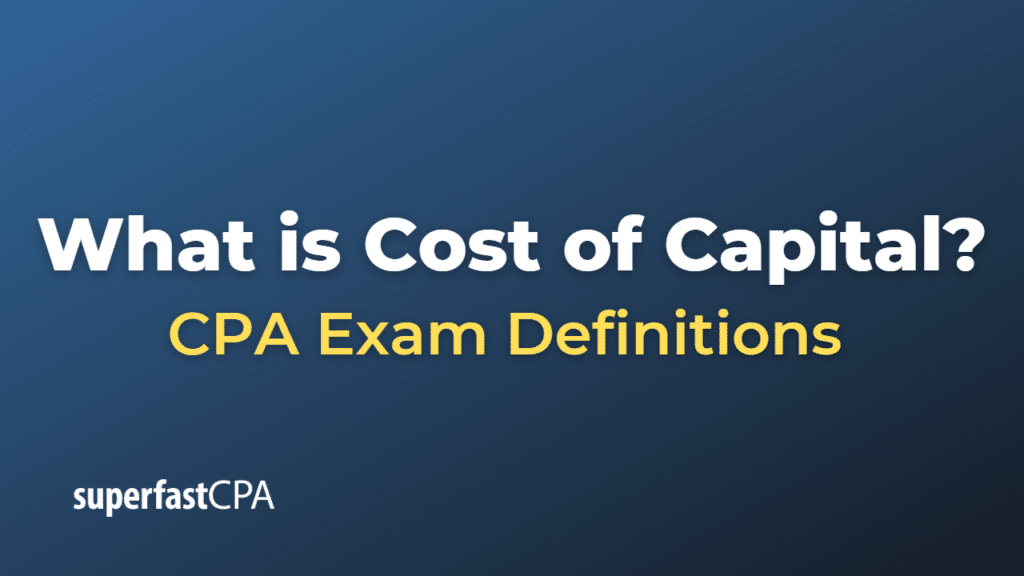Cost of Capital
The cost of capital refers to the return a company needs to give to its investors to attract investment. It is essentially the opportunity cost of making a specific investment. It is the rate of return that could have been earned by putting the same money into a different investment with equal risk. Thus, it acts as a benchmark that a new project has to meet or exceed to be considered a good investment.
There are different types of capital a company may use, including debt (like bonds or loans) and equity (like common or preferred stocks). Each type of capital has its own associated cost:
- Cost of Debt: This is the interest a company pays on its borrowings. It can be calculated as the total interest paid in a year divided by the total debt of the company. This cost is often lower than the cost of equity because debt payments are tax-deductible, reducing the net cost to the company.
- Cost of Equity: This is the return required by an equity investor to invest in a company. It’s typically higher than the cost of debt because equity investors take on more risk – they’re the last to be paid in the event of bankruptcy. The cost of equity can be harder to calculate than the cost of debt. One common method is the Capital Asset Pricing Model (CAPM), which considers the risk-free rate, the expected market return, and the company’s beta (a measure of its risk relative to the market).
The company’s overall cost of capital is calculated by taking the weighted average of the cost of each type of capital, known as the Weighted Average Cost of Capital (WACC). The WACC takes into account the proportion of each type of capital a company has (its capital structure) and provides an overall cost of capital that the company must exceed to create value.
Example of Cost of Capital
let’s consider a hypothetical example with a company we’ll call TechCo.
TechCo has two sources of capital: equity and debt. Let’s say that the company has $10 million of equity, $5 million of debt, and its corporate tax rate is 20%.
- Cost of Debt: Assume TechCo pays 5% interest on its debt annually. However, because interest expense is tax-deductible, the after-tax cost of debt would be the interest rate (5%) multiplied by (1 – tax rate), which in this case would be (1 – 0.20) = 0.80. So, the after-tax cost of debt would be 5% * 0.80 = 4%.
- Cost of Equity: The cost of equity is typically estimated using the Capital Asset Pricing Model (CAPM). For this example, let’s say the risk-free rate is 2%, the expected market return is 8%, and TechCo has a beta of 1.5 (indicating it’s riskier than the average company). The cost of equity would be the risk-free rate plus beta times the market risk premium (expected market return minus the risk-free rate), or 2% + 1.5 * (8% – 2%) = 11%.
- Weighted Average Cost of Capital (WACC): This is the average cost of the company’s capital, with each source weighted by its proportion in the company’s capital structure. In this case, TechCo’s total capital is $10 million (equity) + $5 million (debt) = $15 million. The proportion of equity is $10 million / $15 million = 0.67 (or 67%), and the proportion of debt is $5 million / $15 million = 0.33 (or 33%). Therefore, the WACC would be (0.67 * 11%) + (0.33 * 4%) = 8.67%.
So, in this example, TechCo’s cost of capital is 8.67%. This means that, to create value, TechCo needs to invest in projects that will return more than 8.67% per year. If it invests in projects that return less than this, it will be destroying value because it’s not covering the cost of the capital it’s using.













